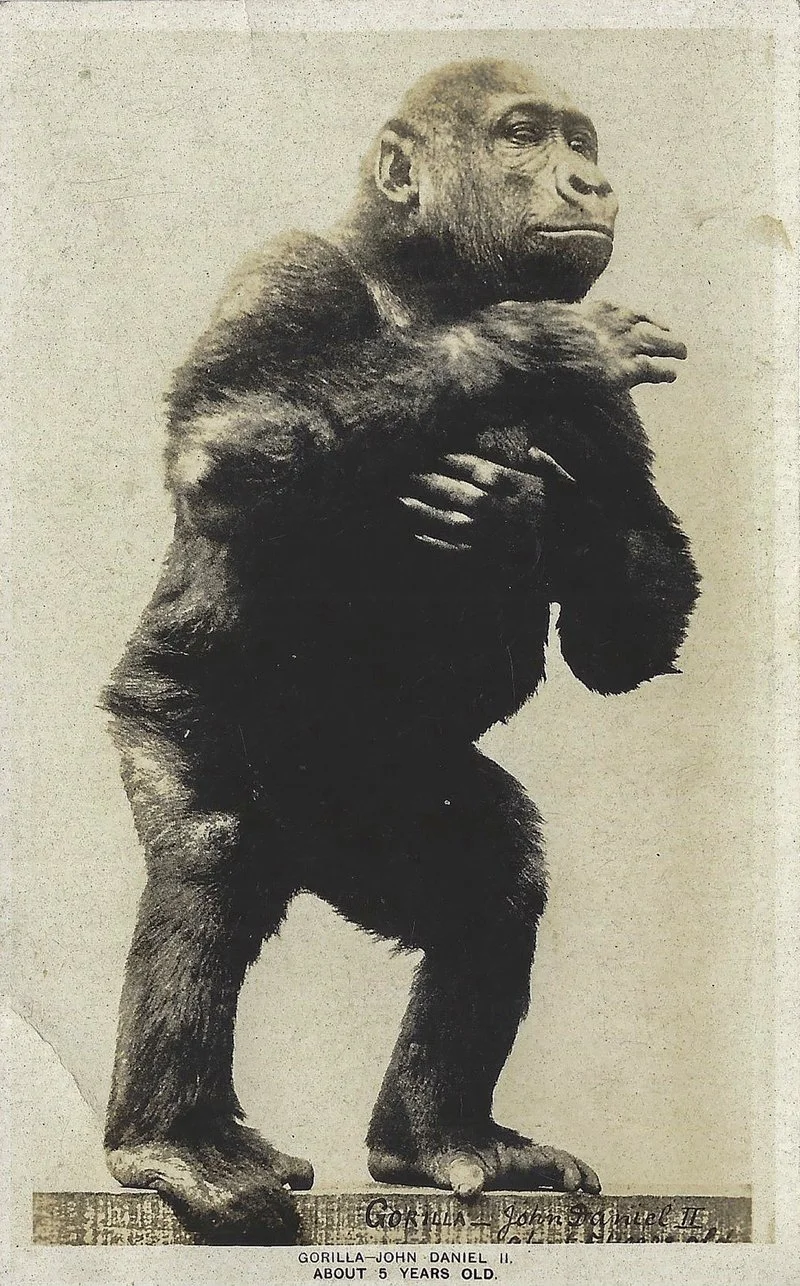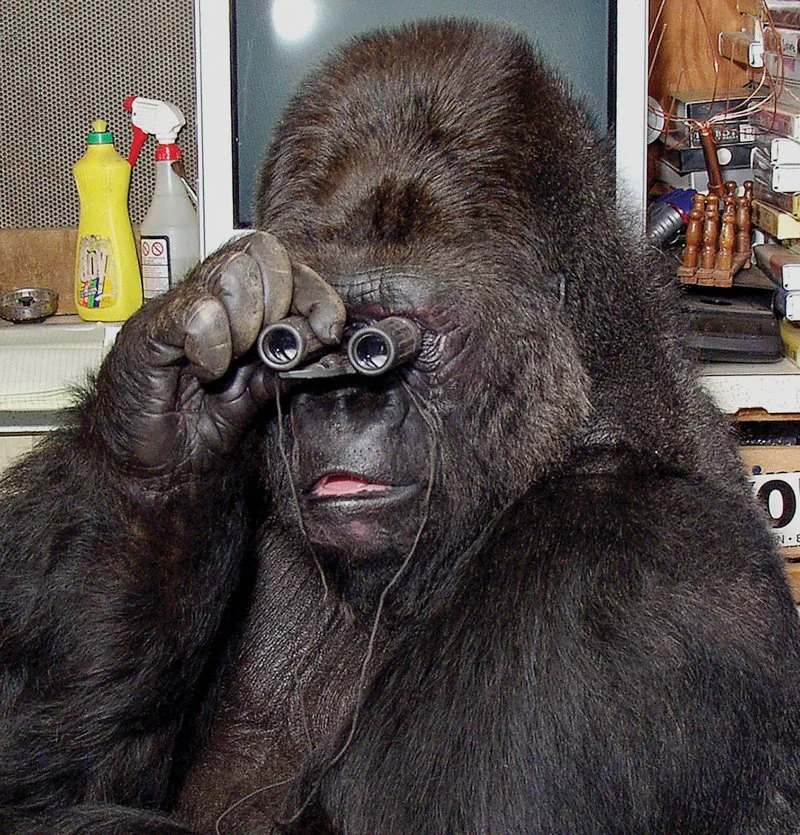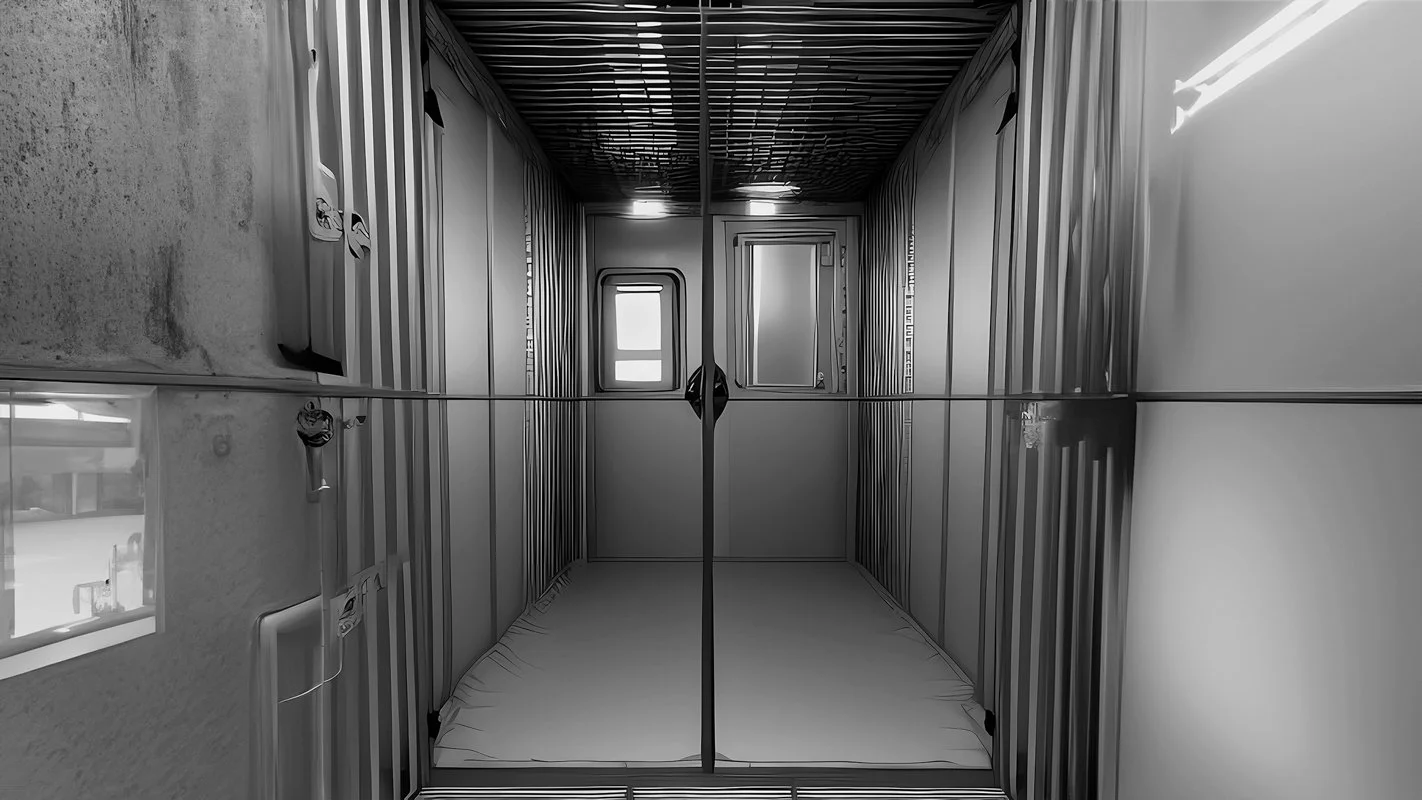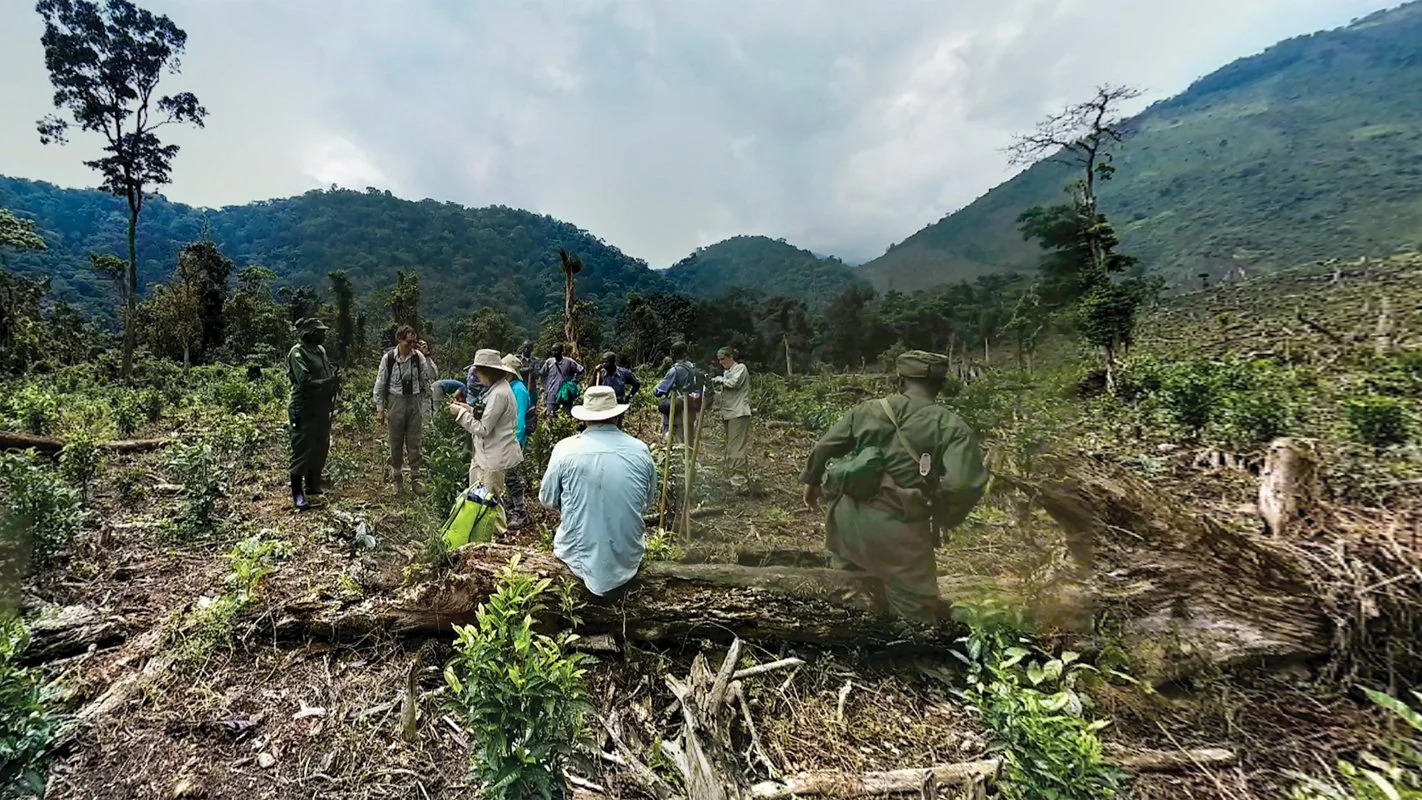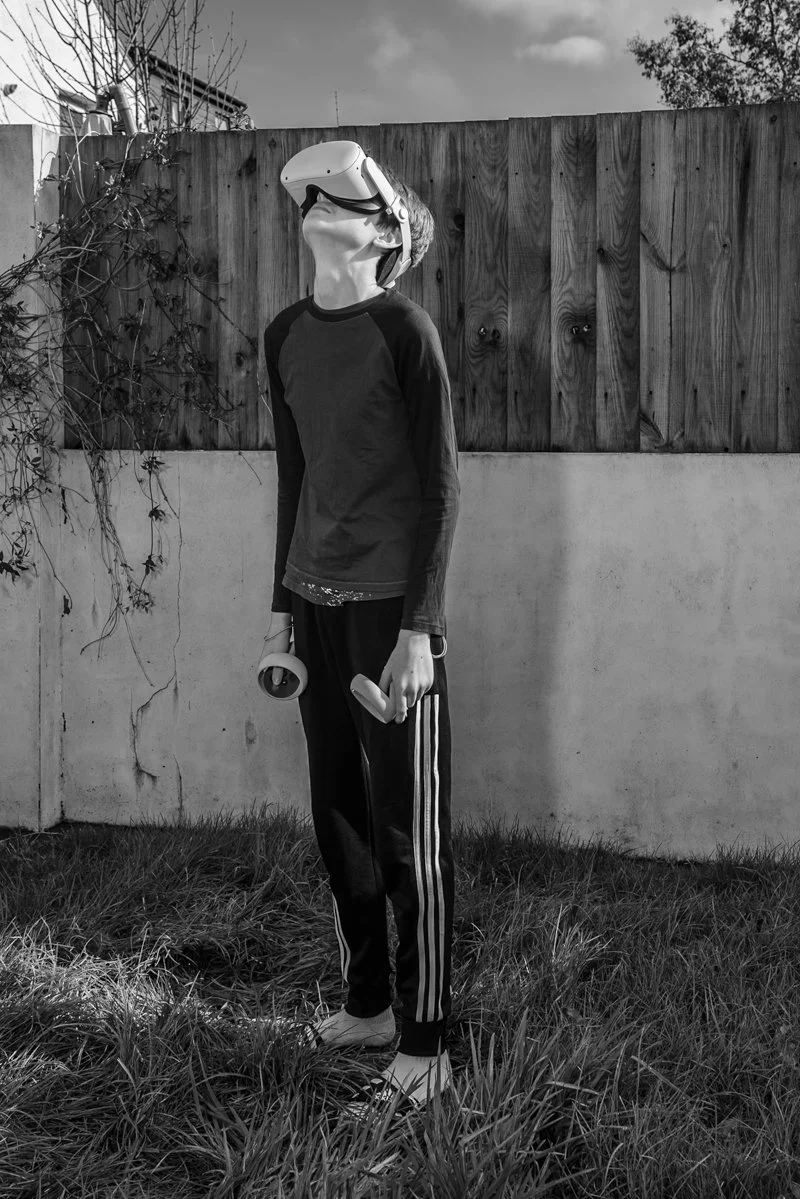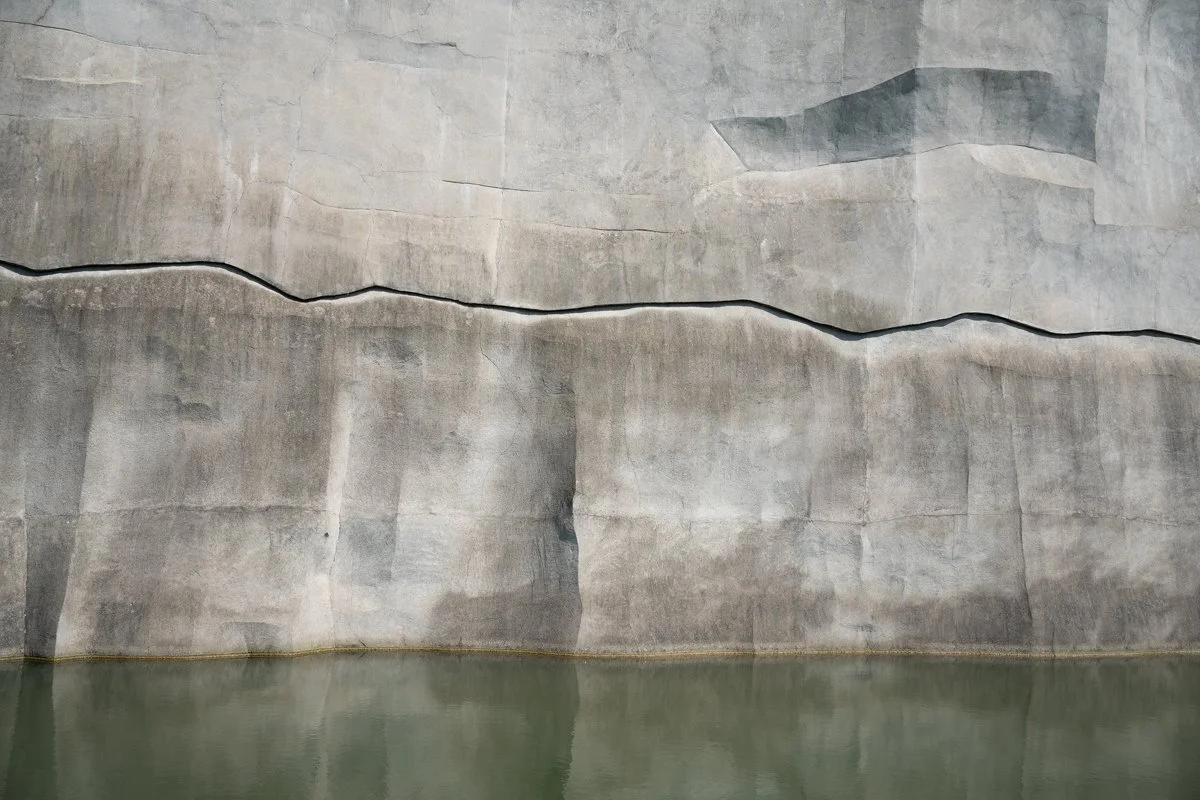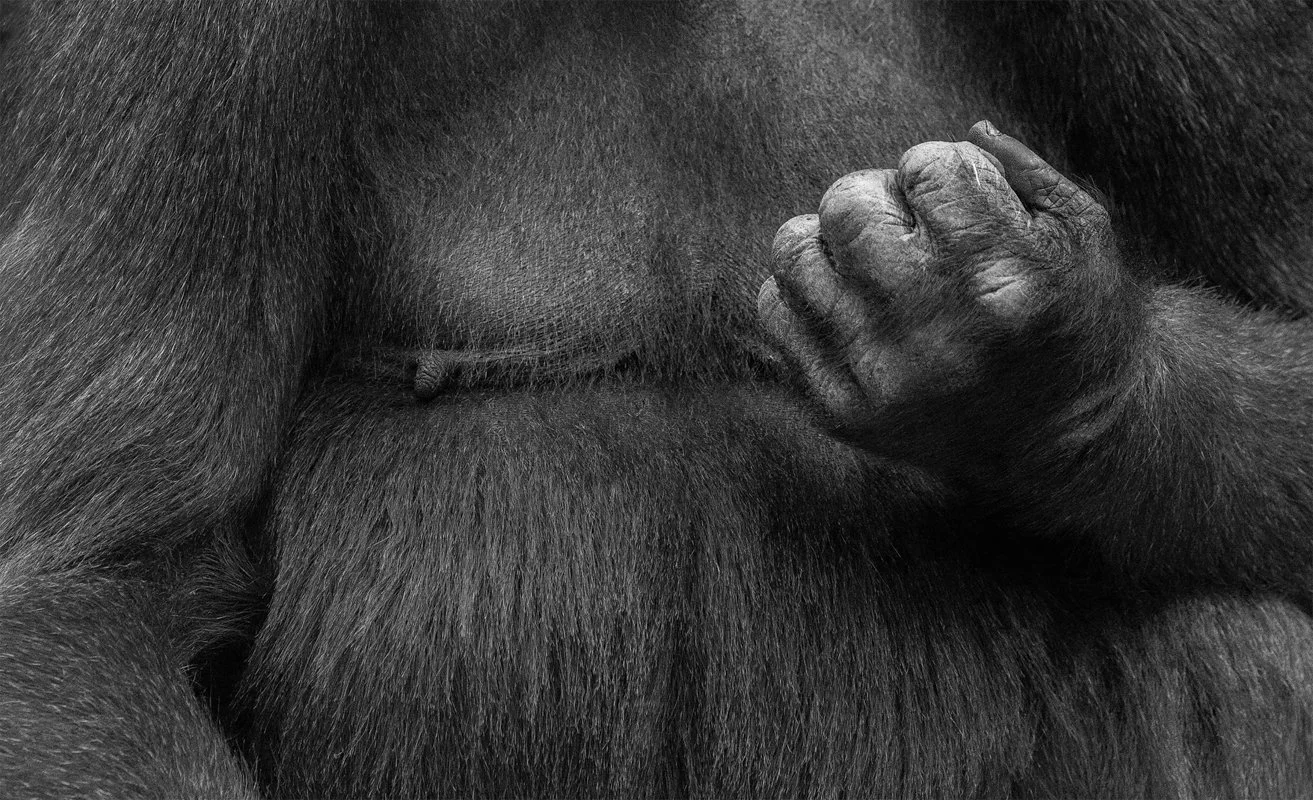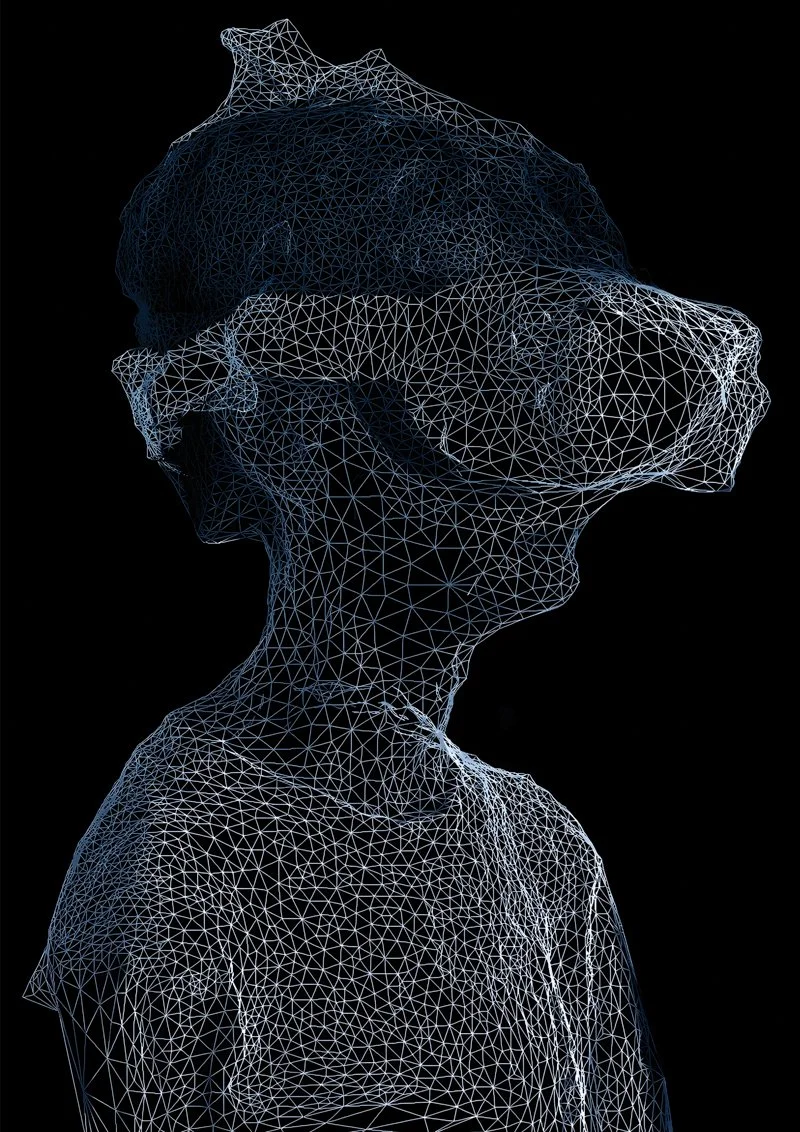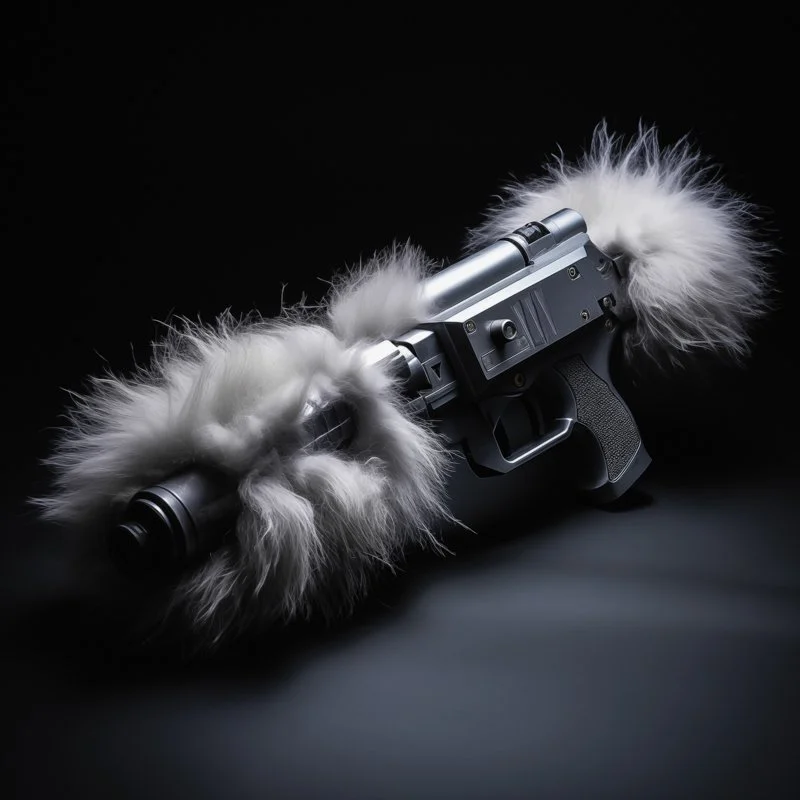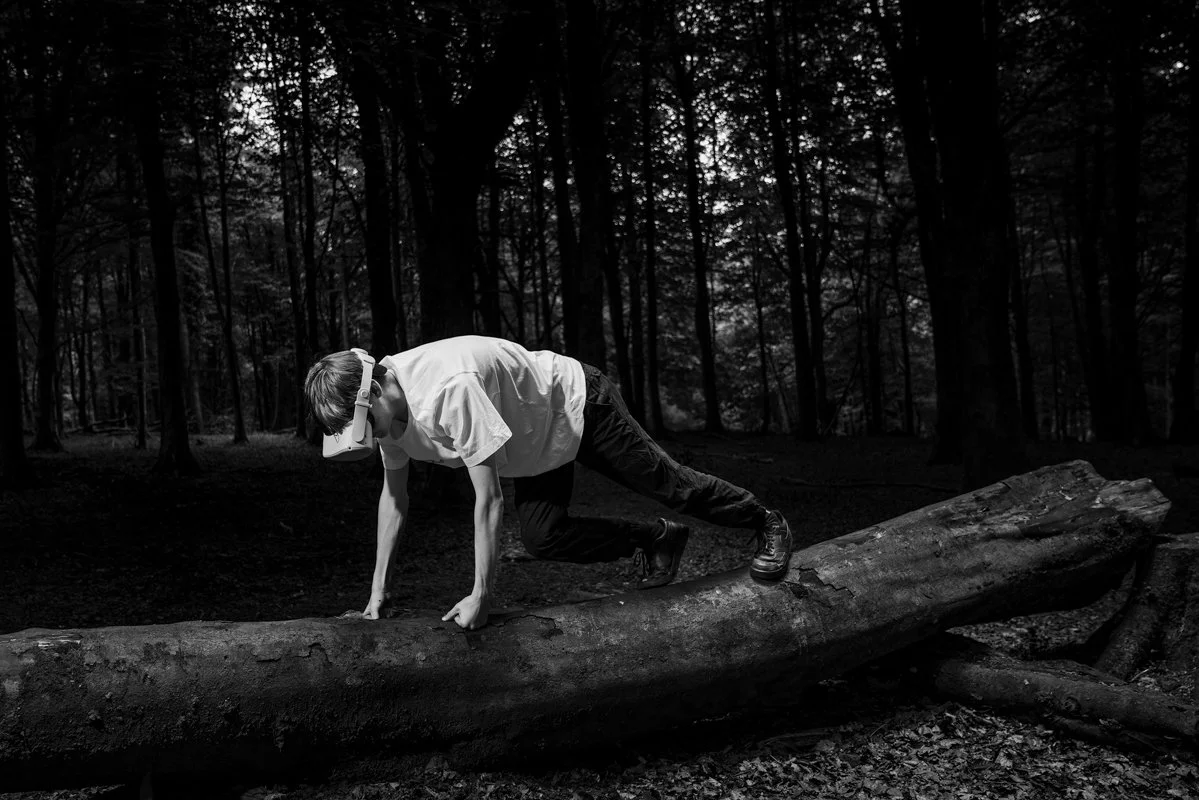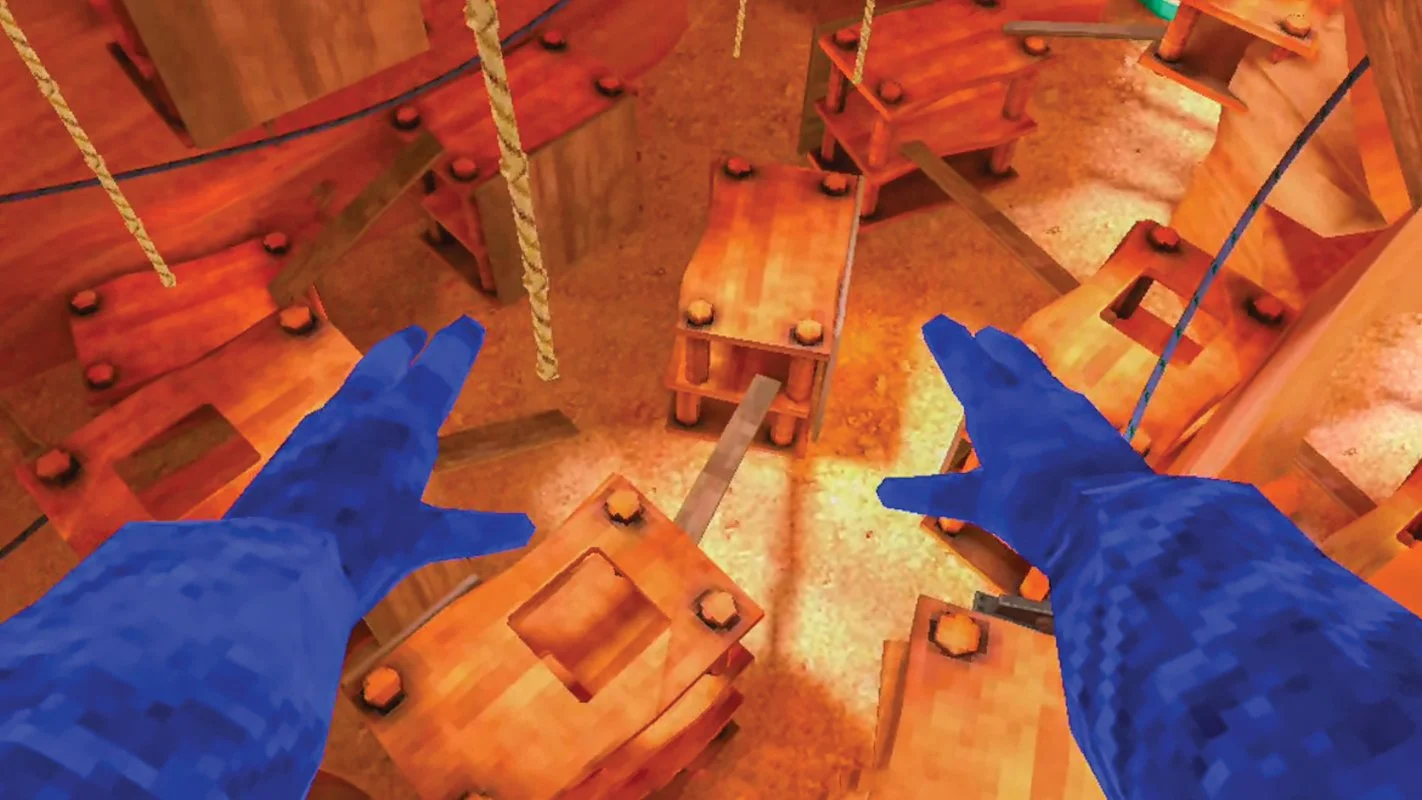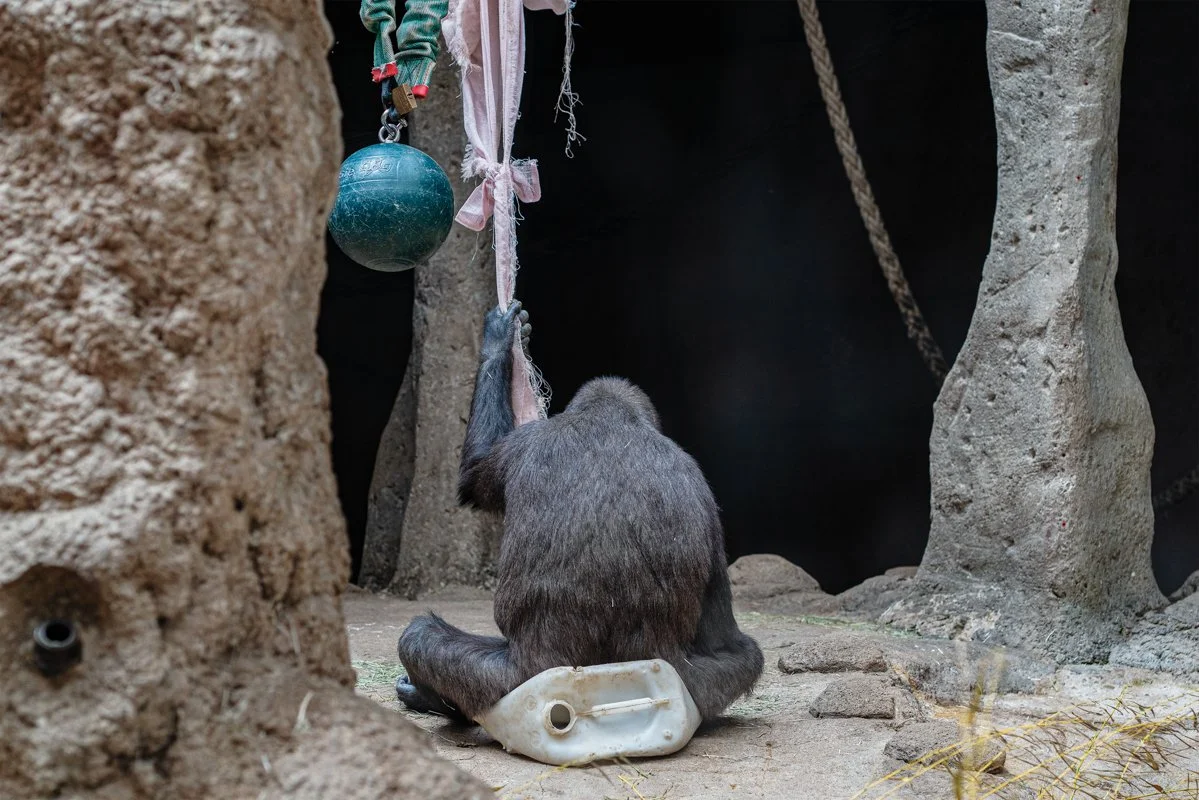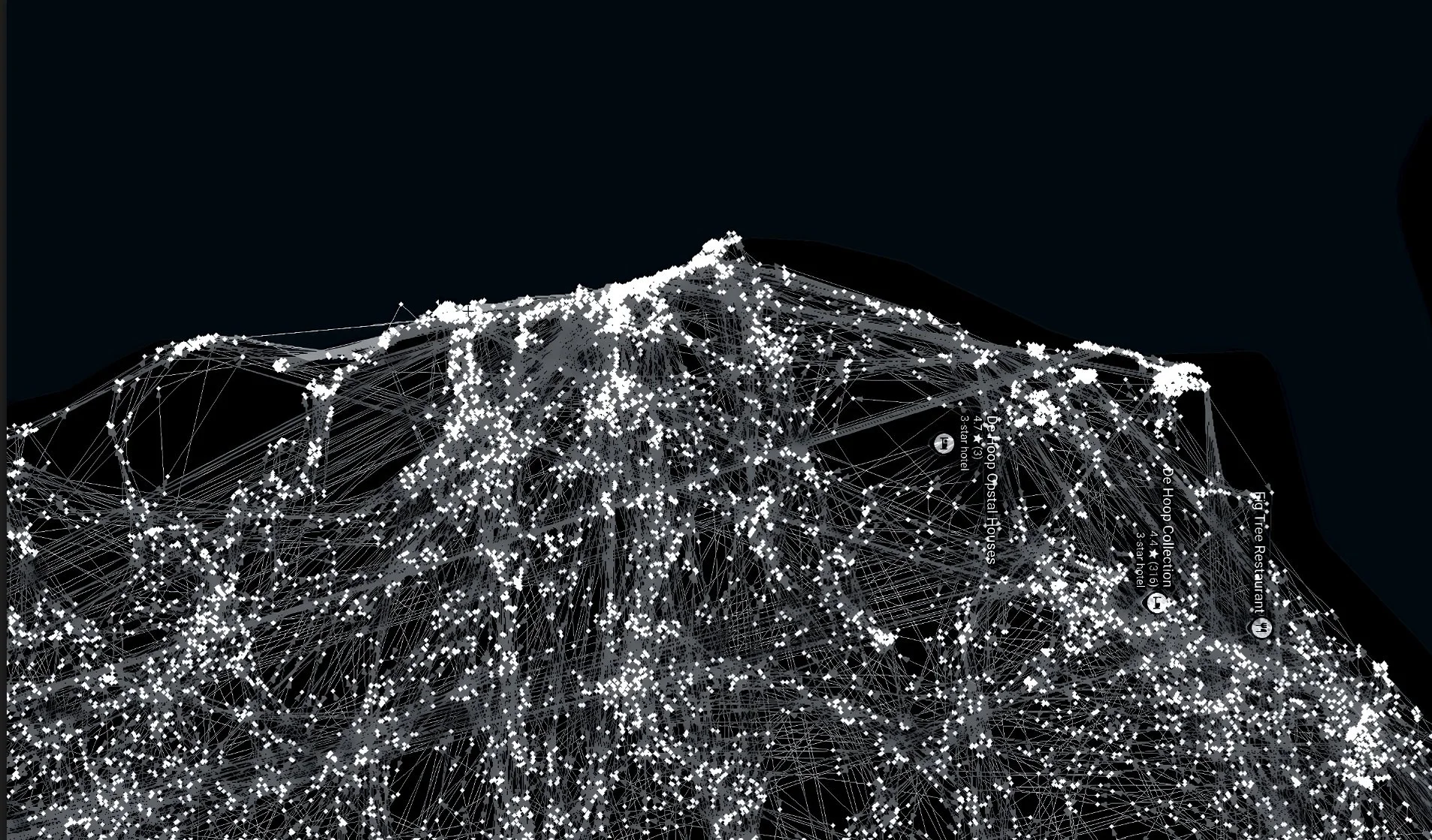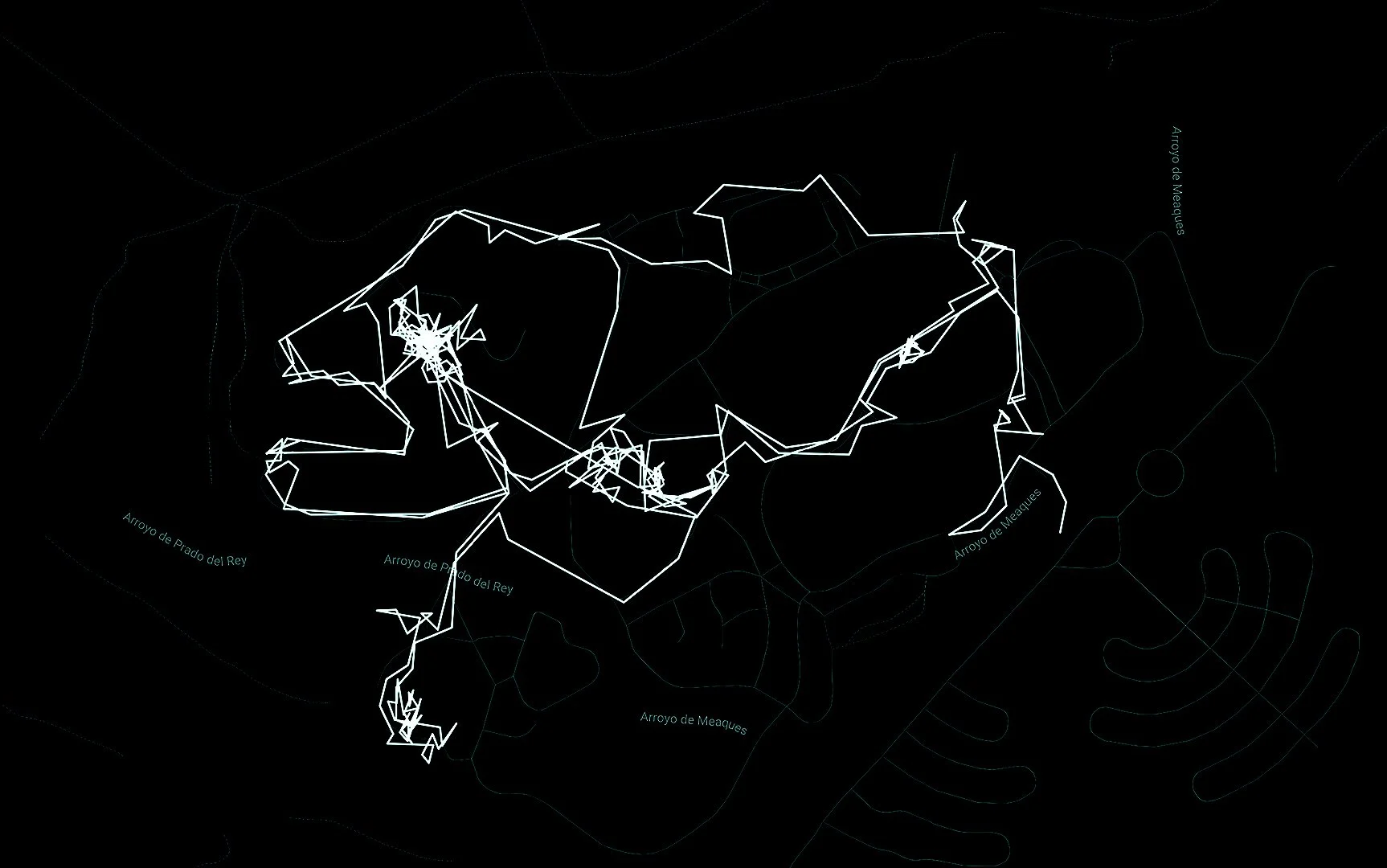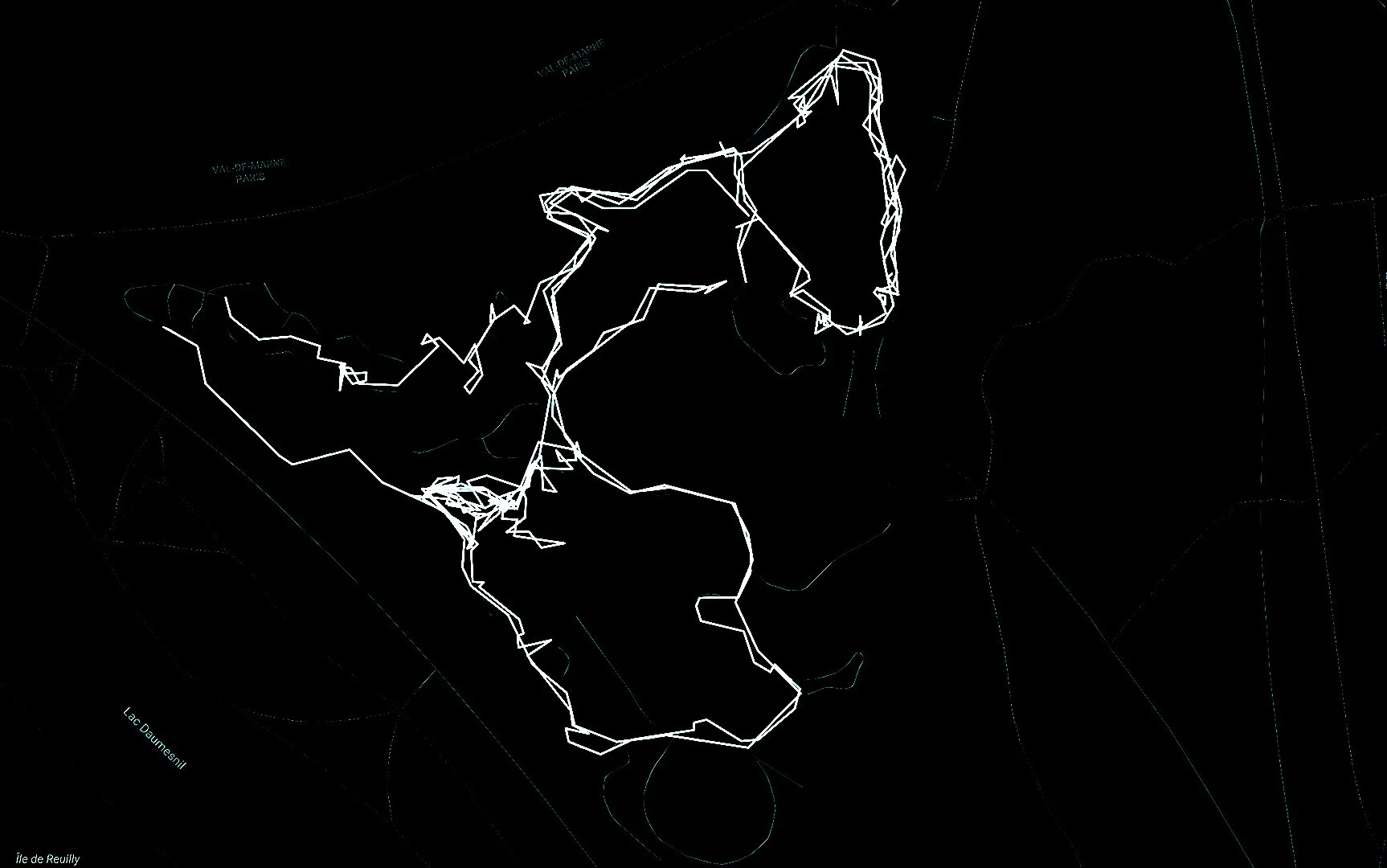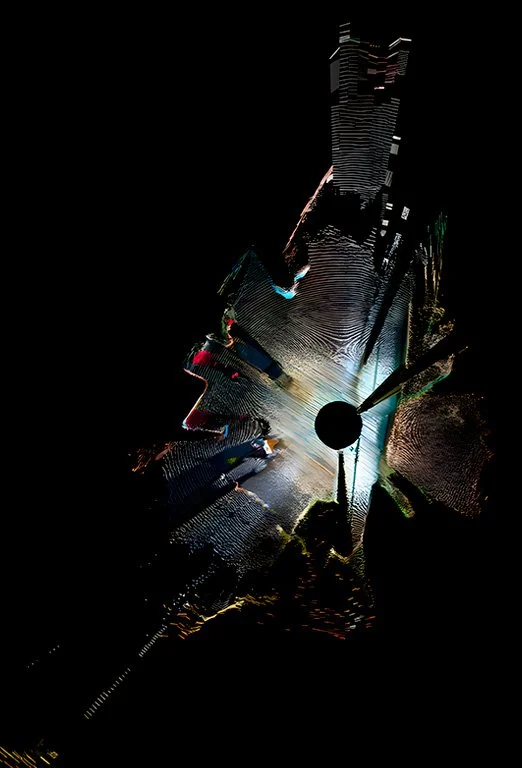works
01 fake bird clown
“We need to open up the human sensorium to other forms of intelligence and perception, to recognize our entanglement with creatures and machines, to look around, askew.” Joanna Zylinska
This fictional story examines the intricate relationships between non-human creatures and humans within the realms of culture, science, and tourism. The project employs AI and machine learning to amplify the voice and agency of a gorilla, challenging anthropocentric perspectives of the planet. The narrative critically highlights whether humanity's technological ambitions foster connections between species or exacerbate divisions, ultimately impacting the well-being of all life on Earth
The narrative centres on the gorilla, which shares 98.3% of its genome with humans, establishing it as our closest living relative with comparable cognitive and behavioural organisation and functionality.
The title FAKE BIRD CLOWN refers to a sign language exchange between a gorilla named KOKO and her caregiver. KOKO identified a photograph of a bird as a picture of herself as a bird and not a gorilla. KOKO appeared to use irony, suggesting that communicating using human-centred methods may prevent us from fully understanding the minds of other species.
The project invites us to question our anthropic entanglement with the Gorilla and our ethical perceptions of a more-than-human world. It offers a multi-layered, playful journey between real-world engagement and virtual gaming spaces.
Koko with a pair of binoculars by Ron Cohn © The Gorilla Foundation / Koko.org
Video Installations
01 a report to an academy
One-channel video | 1920 x 1080p
“A Report to An Academy: Redux” reimagines Kafka’s short story, amplifying a gorilla’s voice to challenge humanity’s dominance over animals.
Drawing on colonial histories of exploitation and othering, it questions anthropocentric paradigms, suggesting intelligence exists beyond human comprehension and urging a re-evaluation of ethical relationships with the non-human world.
02 look!
One-channel video | 1920 x 1080p | 04:49
The audio in this installation was recorded at London Zoo’s “Gorilla Kingdom,” overlaying a 3D LiDAR scan of the bronze sculpture Guy the Gorilla.
It highlights humanity’s tendency to treat gorillas as entertainment, underpinning research that their close family bonds are disrupted by captivity and the onlooking human gaze, which can lead to stress-related health issues, the absence of privacy, and dignity as a species.
Installation views
'Alter Image' MA show, St Michael and All Angels, London

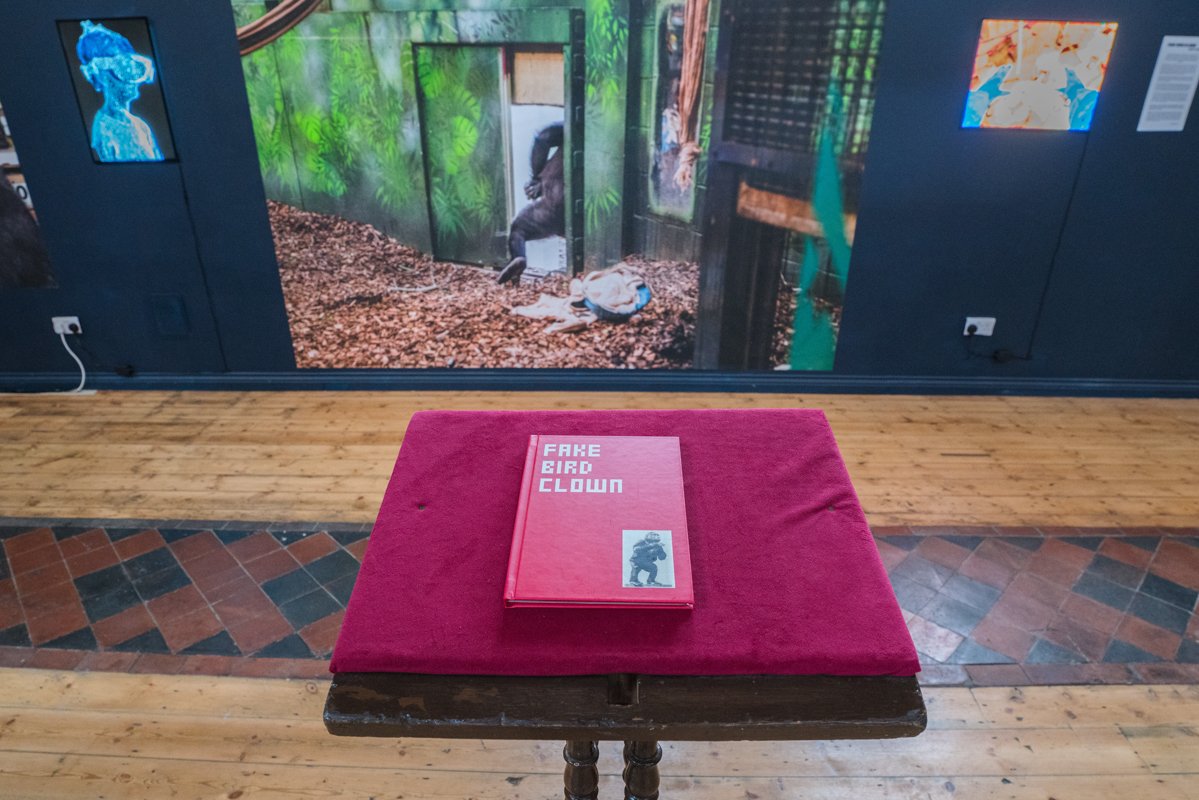

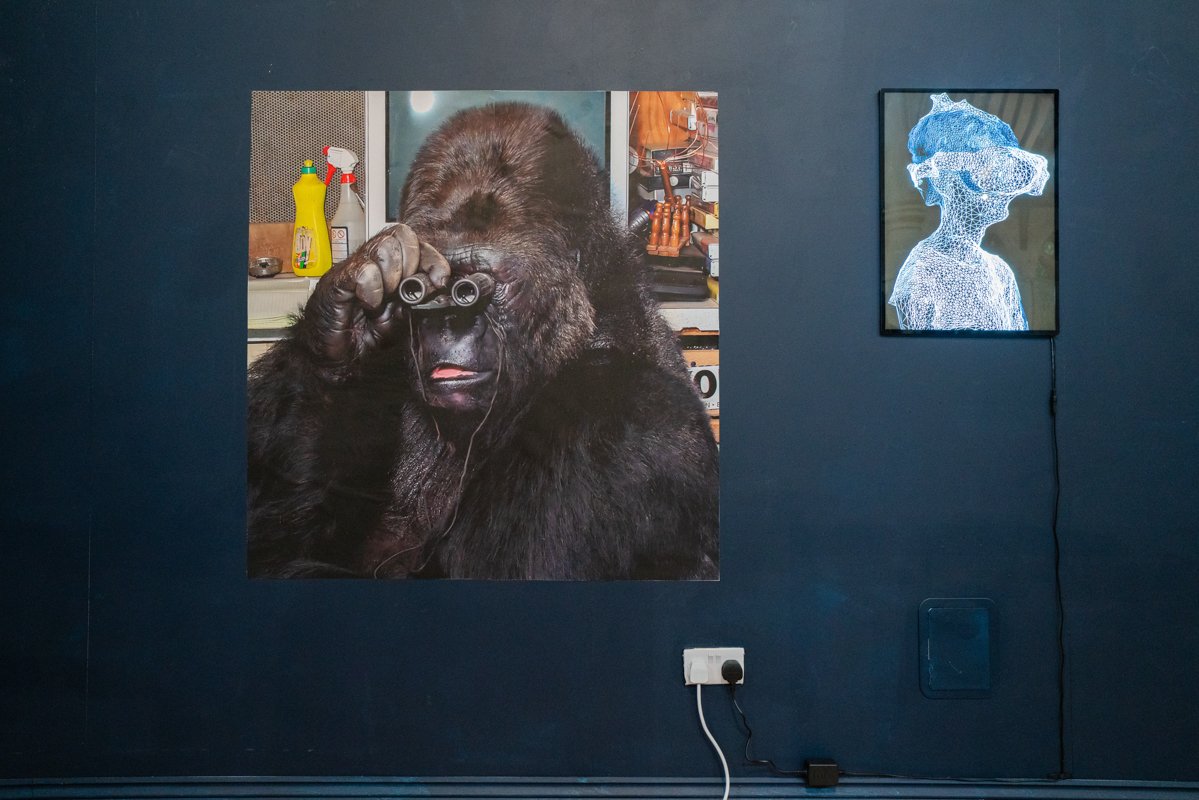

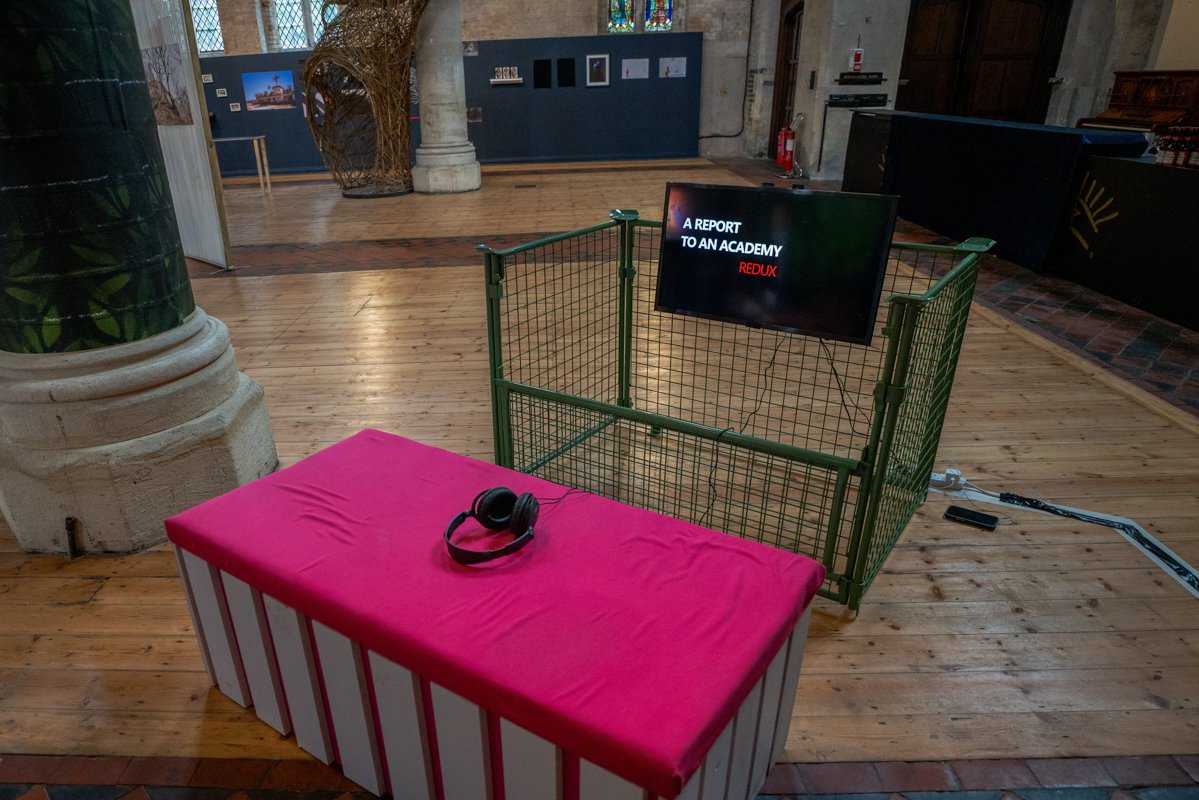

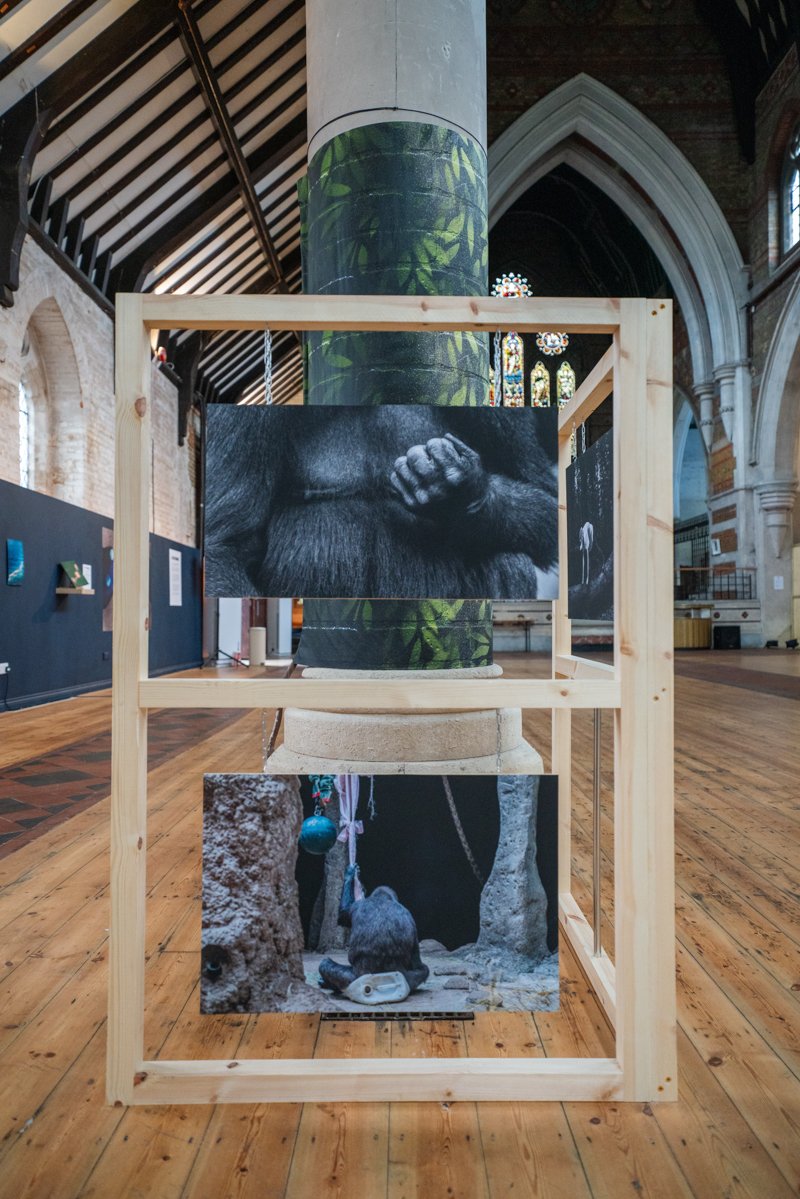
works
02 zoological walks
While working on the project FAKE BIRD CLOWN, I visited zoos in London, Madrid, Paris, and the North Wales Mountain Zoo, where I became acutely aware of the freedom of movement I enjoyed compared to the animals kept in captivity. Typically, I would spend up to eight hours a day walking around the zoos, covering a distance of five to eight kilometers. This experience not only highlighted the stark contrast between my mobility and the spatial limitations imposed on the animals in their enclosures but also raised profound ethical questions about non-human rights and welfare.
Observing the restricted lives of these animals deepened my understanding of the need for a more compassionate and ethical approach to our interactions with non-human beings
The spatial data collected and visualised in these images was gathered using a consumer GPS tracking watch. The GPS data provides a topographical view, reflecting my positioning as a 'hunter' intent on capturing images of the animals—a persona I was acutely aware of. This data serves as a route map of my movements as I gradually closed in on my 'prey.
Data credit: ‘Movebank’ Bonnell TR, Henzi SP, Barrett L. 2016
Research data. GPS Dataset sample of 74 days follows a baboon troop at the DeHoop Nature Reserve in South Africa. GPS receiver above the animal (or as close as possible) to record its position and individual identity. There are around 675 baboons in an area of approximately 340 square kilometres.
During the project, I read the philosopher Vilem Flusser's book ‘Towards a Philosophy of Photography’, in which he expresses ideas that reflect my ethical views while exploring the zoos.
“The act of photography is like going on a hunt in which the photographer and camera merge into one invisible indivisible function. This is the hunt for new states of things, situations never seen before, for the improbable, for information… The structure of the act of photography is a quantum one: a doubt made up of points of hesitation and points of decision-making. An act in which reality is information."
Zoo Aquarium de Madrid | 6000 animals | 0.2 square kilometres
London Zoo | 14,000 animals | 0.10 square kilometres
Welsh Mountain Zoo | 1,500 animals | 0.15 square kilometres
Parc zoologique de Paris | 3,000 animals | 0.15 square kilometres
works
03 doré's algorithm
Doré's Algorithm is a series of text-to-image AI-generated images that speculates on the legacy of human dominance over nature in a post-human world. These synthetic images appropriate and draw inspiration from the visual style of Gustave Doré, the French printmaker renowned for his intricate wood engravings that illustrated classic literature, most notably Dante’s Divine Comedy. The work considers a future where, following the collapse of human civilization, non-human entities have reclaimed ecological dominance, and offers a vision of what this future might look like by means of algorithmic machine eyes.
These images are not photographs; they are the product of a collaboration between myself as an image maker and AI, an artificial technological tool that is not a living thing and has no capacity to bear witness to actual events as a human does. The AI-generated illustrations derived using Diffusion Bee and its default trained model, present surreal scenes where familiar pictorial elements are reassembled into unexpected, uncanny configurations. These compositions, while rooted in the optical visual language of a three-dimensional physical world, reveal subtle incoherences - elements that are ambiguous and appear slightly skewed, resisting immediate comprehension from the viewer.
Zoological Gardens
The Monkey House 1872 Gustave Dore
The images invite us to consider whether these visual artifacts emerge from the interplay between humans, machines, and non-humans, existing not only for human perception but also as synthetic creations for non-human machine eyes. In doing so, the work explores the possibilities of a shared visual realm, blending ecological, technological, the real, the synthetic, and artistic perspectives into a speculative and symbiotic vision of the future, that mirrors back to us our ideological priorities of contemporary society.
works
04 scanning the spectator
LiDAR imaging technology (Light Detection and Ranging) is a computer vision system widely used by scientists and mapping professionals to analyze both natural and built environments. In this project, a mobile phone’s LiDAR scanner was used to capture images by standing in a fixed position in front of an animal enclosure—represented in the images as a black circular disk—while rotating the handset 360 degrees to survey the surroundings. The resulting 3D moving image data was then compressed into a single, 2D topographical perspective, where the spectator’s environment appears in shades of white, and the animal enclosure in hues of brown.
By presenting zoo spectatorship through this hybrid perspective, the images examine the act of looking itself—how humans observe captive animals, the mediated nature of this experience, and the complex relationships between viewer and viewed in spaces designed for controlled encounters.
bio
Gareth Ioan Davies is a Wales-based multidisciplinary documentary photographer with a 15-year background in film and television drama production. His emerging practice investigates the entangled relationships between humans and non-humans, focusing on the dominance of the anthropocentric world. His research, grounded in an ecological and philosophical framework, explores the historical disconnect between species and advocates for a deeper recognition of non-human intelligence. By documenting these interactions, he seeks to reveal alternative perspectives that can lead to a more sustainable and equitable coexistence within the biosphere.
Gareth’s work is driven by the need to give voice and agency to non-human narratives, pivoting away from a human-centric worldview. The storytelling mediums he employs in his practice include photography, moving images, expanded visualisation technologies, and machine learning. In September 2024, he graduated with a master’s degree in documentary photography from the University of South Wales.
exhibitions
awards
publications
2024 : Alter Image, MA Documentary Photography, USW Group Graduation Show, London
2024 : The Turner House Open Exhibition, Cardiff
2023 : Displacements, Bienal Fotografia do Porto
2024 : CHARTA Book Award (Finalist)
2024 : YOGURT online magazine
2024 : SOURCE graduate online photography
